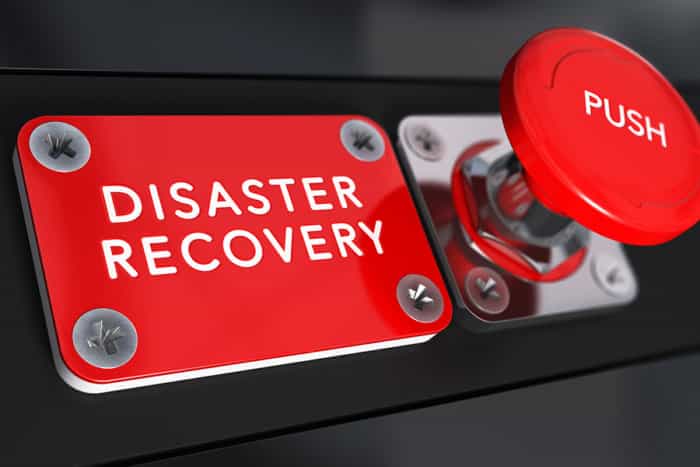The Knowledge Centre

The difference between Disaster Recovery and Business Continuity
7th September 2018
In the digital era where a cyber breach is no longer an unlikely event but a realistic risk, buzzwords like ‘backup’, ‘disaster recovery’ and ‘business continuity’ are thrown around everywhere. You might not be quite sure what exactly they mean, and you’re not alone.
Many businesses use some of the terms synonymously, and even worse: some don’t believe the difference is not important to know. Yet in a time where 60% of businesses shut down within 6 months after data loss, knowing the difference has never been more important.
Fret not! We’re here to explain each term, so you understand which is which and why each aspect is crucial for your business. Ready to get started?
What is Data Backup?
In its simplest form, backup is a copy of data held on something. The data could be held on tape, USB, disk, CD or in the cloud. Data loss can be caused not just by technical outages but also by cyber breaches. Take the example of ransomware. When you fall victim to a ransomware attack, cyber criminals will hold your data hostage until you pay a ransom, yet only 16% of global businesses manage to get all their data back even if they decide to pay the ransom. That’s why it’s so crucial to not just backup your data regularly, but also ensure your backup allows you to perform disaster recovery.
What is Disaster Recovery?
Disaster recovery is the ability for you to recover all your files, software and functionality quickly, easily and without corruption. Disaster Recovery involves a set of policies, tools, and procedures to enable the recovery or continuation of vital infrastructure and systems following a natural or human-induced disaster.
If your server died, you wouldn’t be able to quickly get back to work if you only had file backup. In order for you to start working again, your server would need to be replaced, all software re-installed, data re-installed and then the whole system would need to be configured with your settings and preferences. This process could take hours or even days – and that’s if you have all your software licenses and a clean copy of your data.
Disaster recovery is the exercise in which you aim to protect your business from the effects of a disaster. Too often though we see business owners have gone through this exercise without the input of their IT supplier and the DR plan is, if it ever came to being implemented, unachievable. Why? The business owner or person charged with producing the DR plan has usually woefully underestimated the time it would take to source new equipment, install and configure it then restore the data. If that data is stored on a cloud backup and there is a lot of data that could take a while to download etc.
What is Business Continuity?
Business continuity systems are backup systems that have the capability of getting your business back online within minutes. They combine the backup, and the Disaster Recovery planning to ensure that if ever your business is hit by disaster, you can get back up and running as quickly as possible. This is all done by utilising cloud backup, and virtualisation to make your systems and data accessible to employees, whether working from the office, or if it’s burnt down or inaccessible then from home if required.
Ensure You're Prepared with Southern IT
Now that you know understand the differences between backup, disaster recovery and business continuity, you can start to work out what you need for your business. At Southern IT, we offer comprehensive services to ensure your business is prepared for the worst-case scenario and your business can survive a potential disaster. If you’re ready to learn more, get in touch with our experts or follow the link below to learn more about our disaster recovery and business continuity services.
Get in touch with one of our friendly experts.
Keen to learn more? Explore our other resources on Business Continuity & Backup below:
View More Articles
Other Articles
Take a look at our most recent articles
-
- Setup a Staff Rota Using Microsoft 365 February 25, 2019 Continue reading...
- Are there any substitutes to ISO 27001 suitable for my business? January 22, 2019 Continue reading...
Can your business recover from Disaster?
Do you have a backup? is it sufficient? when did you last review it, or test it?
Download our free 25 point checklist to help give you peace of mind that you've got the best system in place for your business needs.

